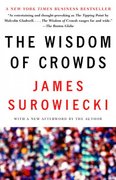2. A school district undertakes an experiment to estimate the effect of class size on test scores in second-grade classes. The district assigns 50% of its previous year's first graders to small second - grade classes (18 students per classroom) and 50% to regular-size classes (21 students per classroom). Students new to the district are handled differently: 20% are randomly assigned to small classes and 80% to regular-size classes. At the end of the second-grade school year, each student is given a standardized exam. Let ?, denote the exam score for the ith student, ?, denote a binary variable that equals 1 if the student is assigned to a small class, and ? ; denote a binary variable that equals 1 if the student is newly enrolled. Let , denote the causal effect on test scores of reducing class size from regular to small. (a) Consider the regression ? = Bo + 1?; + ? i. Do you think that E(? ;|? ;) = 0? Is the OLS estimator of $1 unbiased and consistent? Explain. (b) Consider the regression ?; = Bo + 81?; + 82? ; +? ;. Do you think that E(? ;|? ;: ? ;) depends on ? ? Will the OLS estimator of , provide an unbiased and consistent estimate of the causal effect of transferring to a new school (that is, being a newly enrolled student)? Explain. 3. Referring to Table 7.1 in the textbook: (a) Calculate the R- for each of the regressions. (b) Calculate the homoskedasticity-only F-statistic for testing 3 = $4 =0 in the regression shown in column (5). Is the statistic significant at the 5% level? 4. Does a student's GPA rise or fall as the student moves from freshman year to senior year? In this question you will explore this issue - and other factors that are correlated with GPA - using data on college students collected by researchers at the Harvard School of Public Health. The researchers surveyed 9,890 undergraduate students at 119 four-year colleges in 2001. Use the data set college. cav on Latte. Make sure to use robust standard errors in your regressions. (a) Estimate the regression of GPA on male and work. Interpret the regression coefficients (including the intercept). (b) Estimate the regression of GPA on freshman, sophomore, junior and senior for men only. Are all regression coefficients reported in the results? Explain what happened? What is the solution? (c) Estimate the regression of GPA on sophomore, junior and senior for men only. What is the interpretation of all coefficients in this regression (including the intercept)? (d) For the regression in (c), test the null hypothesis that there is no difference in the GPA of sophomores and juniors. What is the number of restrictions q for this test? (e) For the regression in (c), test the null hypothesis that the coefficients on sophomore, junior and senior are all zero, against the alternative that at least one coefficient is nonzero. State clearly the significance level of the test you are using and the critical value of the F statistic for this test







